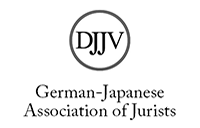Die Bedeutung der Unternehmensgröße in Japan am Beispiel der Mindestkapital- und Publizitätsregelungen
Abstract
Today, the size of a company is widely used to differentiate regulations in economic law. Two fields where this phenomenon is easily discernable are rules concerning the minimum assets of a company and the disclosure of its accounts. Both measures are employed to provide shareholders and debtors with a certain level of security.
It took Japanese lawmakers until 1991 to establish a minimum asset regulation, as there was not a felt need for this kind of “legal barrier” for many years. In addition, politicians were afraid to stifle the growth of the Japanese economy after the Second World War. A product of tiring discussions and negotiations, the final amount of 10 million Yen leaves us with doubts about the monetary guarantee function of the regulation.
The task of disclosing company data was taken up by publicity regulations. After the spectacular collapse of several Japanese industrial conglomerates in the mid-sixties revealed a frightening number of “window-dressing accounts,” efforts were intensified. In 1974 a special law concerning the auditing of stock company accounts was issued, and several amendments followed. It classified small, medium-sized, and large companies with increasing intensity of regulation. Only the largest companies now have to be audited by certified public accountants; smaller ones are only liable to in-house auditors. Thus the bulk of Japanese corporations today are not subject to serious publicity laws.
(The Editors)






